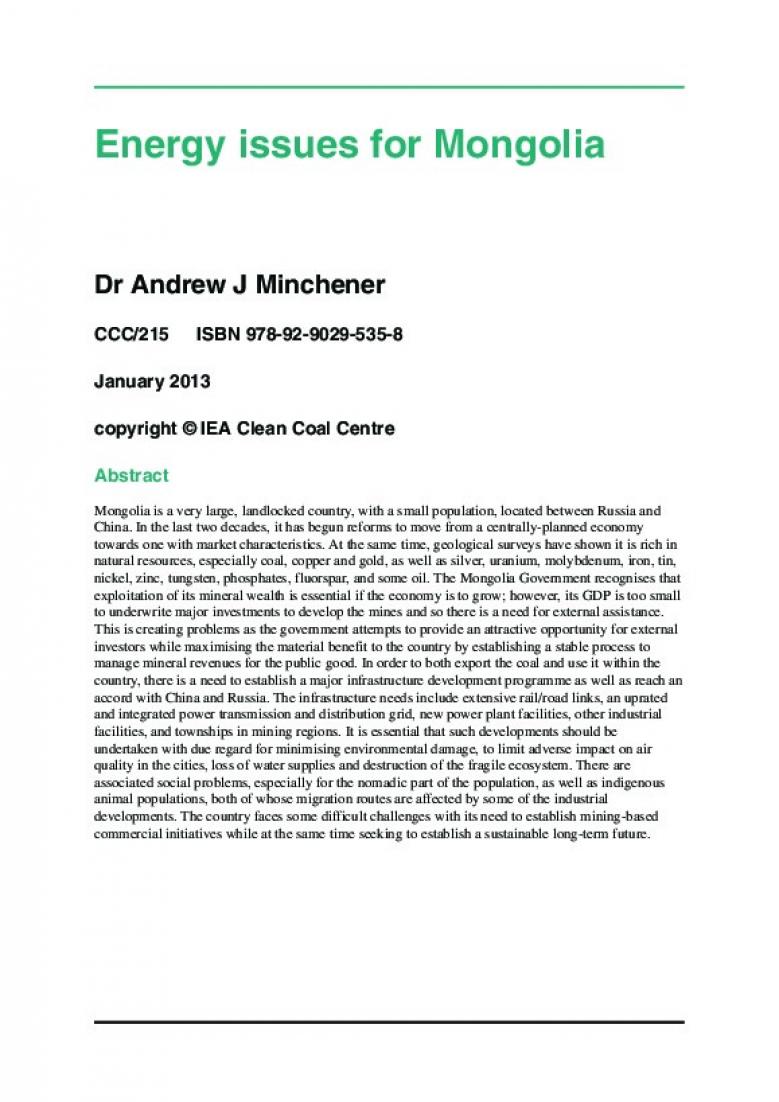CCC/215 ISBN 978-92-9029-535-8
January 2013
copyright © IEA Clean Coal Centre
Abstract
Mongolia is a very large, landlocked country, with a small population, located between Russia and
China. In the last two decades, it has begun reforms to move from a centrally-planned economy
towards one with market characteristics. At the same time, geological surveys have shown it is rich in
natural resources, especially coal, copper and gold, as well as silver, uranium, molybdenum, iron, tin,
nickel, zinc, tungsten, phosphates, fluorspar, and some oil. The Mongolia Government recognises that
exploitation of its mineral wealth is essential if the economy is to grow; however, its GDP is too small
to underwrite major investments to develop the mines and so there is a need for external assistance.
This is creating problems as the government attempts to provide an attractive opportunity for external
investors while maximising the material benefit to the country by establishing a stable process to
manage mineral revenues for the public good. In order to both export the coal and use it within the
country, there is a need to establish a major infrastructure development programme as well as reach an
accord with China and Russia. The infrastructure needs include extensive rail/road links, an uprated
and integrated power transmission and distribution grid, new power plant facilities, other industrial
facilities, and townships in mining regions. It is essential that such developments should be
undertaken with due regard for minimising environmental damage, to limit adverse impact on air
quality in the cities, loss of water supplies and destruction of the fragile ecosystem. There are
associated social problems, especially for the nomadic part of the population, as well as indigenous
animal populations, both of whose migration routes are affected by some of the industrial
developments. The country faces some difficult challenges with its need to establish mining-based
commercial initiatives while at the same time seeking to establish a sustainable long-term future.
| Attachment | Size |
|---|---|
| 859.36 KB |


